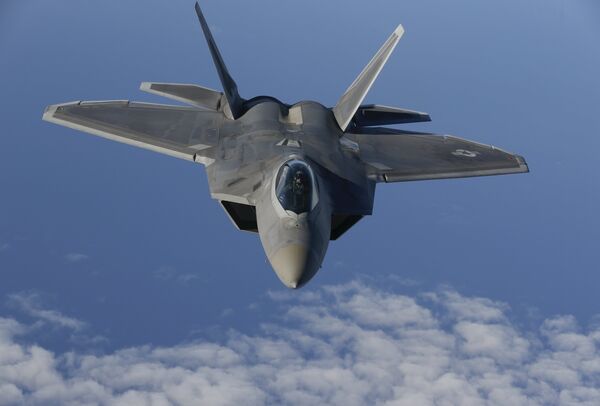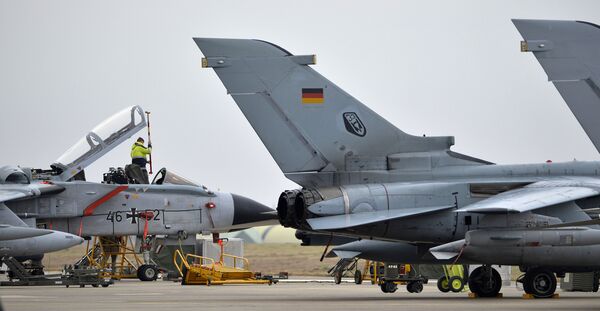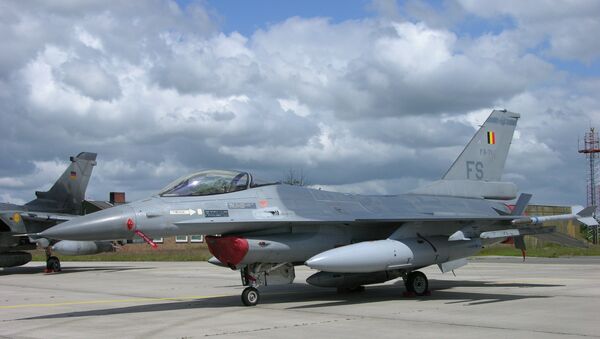After the craft burst into flames October 11, the Belgian armed forces issued an initial statement alleging a "fire broke out during maintenance work" on three aircraft at Florennes military base, resulting in the destruction of one plane and a second suffering "collateral damage".
However, Belgian civil servants' union SLFP has revealed the jet was destroyed after gunfire from a 6-barrel rotary M61A1 Vulcan cannon caused its fully-loaded fuel tank to explode. National news outlet RTL.Info quoted the head of SLPF Defense, who claimed the costly chaos resulted from an accident.
— Tony Delvita (@ebcrew00) October 11, 2018
"We may be thinking about human fault or technical failure, but we have not yet been warned of an intentional act," he explained.
Base Lieutenant-Colonel Didier Di Giovanni said a light casualty" was evacuated to hospital by ambulance, suffering from hearing problems due to secondary explosions. The blast "probably destroyed" the jet, although this is yet to be conclusively confirmed as the site "is being secured by mine clearance services".
The fire was eventually brought under control, with rescue services brought in to help tackle the blaze. All base activities have been suspended, and an official investigation into the incident is ongoing.
Florennes, 45 miles south of Brussels, is home to the 2nd Tactical Wing of the Belgian Armed Forces, part of the Nato response force.
Litany of Failures
It's far from the first time a NATO jet has been involved in a calamitous accident, or the first time a member state has attempted to cover up or obfuscate the true circumstances of a disaster.

In August 2011, a French Mirage fighter jet crashed in mid-air with a Lithuanian plane. The NATO plane managed to land after the collision with only "light" damage, while the Lithuanian pilots successfully ejected from their L-39 Albatros "without serious injury" after aiming it toward an unpopulated area to avoid causalities on the ground. It crashed in a forested swampland near Rekyva lake.
In January 2015, an F-16 crashed during a NATO exercise in Spain, killing 11, after experiencing a technical failure during takeoff. Its two pilots tried to eject unsuccessfully, and the F-16 hit two Italian AMX planes and three French jets — a Mirage 2000 and two Alfa Jets — when it crashed.
In all, nine French and two Greek personnel died, and 20 personnel — nine French and 11 Italians — were injured. It was the highest death toll in a single day for the French armed forces since an ambush in Afghanistan in which 10 died in 2008.

In April 2018, a Greek Mirage 2000-5 crashed into the Aegean sea after engaging in a dogfight with fellow NATO member Turkey's air force, in disputed airspace near the island of Skyros. The pilot was killed. The disaster followed a spike in tensions between Greece and Turkey over the sovereignty of the Aegean, an inter-country rift NATO has done nought to resolve over the course of its existence, coming mere days after Greek soldiers fired on a Turkish helicopter as it approached the island of Ro.
In July 2018, a Romanian military IAR 99 Soim trainer aircraft crashed during an exercise in eastern Romania, near a military air base in Bacau. Its two pilots ejected in time and were rescued shortly after the accident — one was slightly injured. Despite the crash, Romania plans to buy another 36 multi-role combat aircraft by 2022, raising defense spending to two per cent of national GDP in compliance with NATO's demands.

In August 2018, a Lithuanian Eurofighter 2000 jet was on a NATO air patrol mission near Russia's border with Estonia when it accidentally fired an air-to-air missile into Russian territory. Experts expressed shock at the incident, as the Eurofighter is a ‘smart' modern aircraft, with an armament control system — pilot can't simply lean on a control stick or mistakenly press a button to launch a missile, and the aircraft offers data about the target's direction and speed to a missile before launch.

